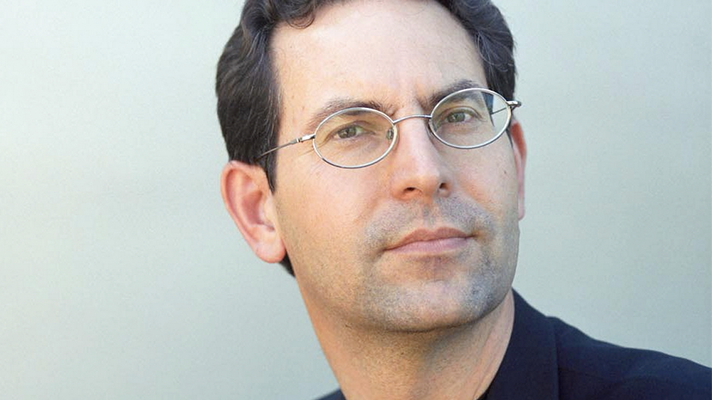Compliance & Legal
SPONSORED
Privacy & Security
Based on a recent survey, this paper reveals results that can help providers assess their progress and compare it to that of others.
SPONSORED
Compliance
In this webinar, we will discuss the benefits of deploying continuous monitoring as the foundation of your compliance validation program. Continuous monitoring with a cloud partner makes available, scalable resources such as people, processes, and technologies that even mid-sized healthcare organizations are challenged to provide. These resources can even be used to combat and adapt to new threats that prevent potential vulnerabilities from being exploited. Continuous monitoring meets the need for any organization to develop essential documentation and reporting required for audit support.
Complying with annual audits can be expensive, resource intensive, and time-consuming. As with many mandates, compliance with the HIPAA security rule can become a gigantic annual checklist instead of its original intent of protecting ePHI from inadvertent disclosure and maintaining the privacy and security of patient data. Compliance with an audit does not demonstrate security program maturity but instead demonstrates a point-in-time check. Audits should be a culmination and external validation of a mature, continual process of internal security and compliance validation.
We will also discuss how through the use of continuous monitoring, our client, Surgical Information Systems, achieved a demonstrably secure and compliant environment with fewer in-house resources. Continuous monitoring proactively identified and closed potential vulnerabilities as part of the ongoing process rather than retroactively, as a result of an audit or review. This partnership, where resources of the client and trusted are joined, removes much of the scramble for point-in-time report collection and presentation for auditors resulting in smoother and condensed audits.
Results of two polls published in the past week, from the Kaiser Family Foundation and Pew Research Center, demonstrate growing support for the Affordable Care Act, aka Obamacare.
The Kaiser Health Tracking Poll: Future Directions for the ACA and Medicaid was published February 23, 2017. The margins in February 2017 were 48 percent favorable, 42 percent unfavorable.
While the majority of Republicans continue to be solidly against the ACA, a larger share of voters who identify as Independent have shifted to a favorable position on Obamacare.
Furthermore, the KFF survey found that more than one-half of Americans overall say Medicaid is important for their families, with fewer Republicans saying so. Fifty-six percent of Americans said they had some connection to Medicaid, either currently or in the past.
The KFF survey was conducted February 13-19, 2017 by telephone among 1,160 U.S. adults ages 18 and older.
The Pew poll asked people if they approved or disapproved of the healthcare law passed by Barack Obama and Congress in 2010. The difference between pro- and con- in the Pew poll was wider than in the KFF survey, with 54 percent approving and 43 percent disapproving.
Among people who disapprove of the law, more want to see Republican Congressional leaders modify the law versus repealing it, now with 44 percent of Republicans seeking repeal and 42 percent looking for a “repair.”
There’s also a big difference in how younger Americans view the ACA compared with older people by a 2:1 ratio: 65 percent of younger adults approve of the law vs. 31 percent who disapprove. Support for Obamacare has also grown among Americans between 50 and 64 years of age.
Note that the divergence in positive/negative responses in both polls reversed in 2017, lines crossing in the opposite directions as the 2017 new year set in with the eventual confirmation of Secretary Tom Price to lead the Department of Health and Human Services, and the reality of prospects for an ACA repeal.
Finally, college graduates are more likely to support the Affordable Care Act than people with no college.
The Pew poll was conducted among 1,503 U.S. adults the week before the KFF study, February 7-12, 2017.
Health Populi’s Hot Points: Media outlets repeated the Democratic Party leadership’s mantra that “Republicans could make America sick again.” The UK’s Financial Times reported that, “Trump warns party on speed of health reform as lawmakers push alternative visions.” The column pointed out: “The day after Republicans took a first step towards repealing the Obama reforms, the president and Mr. Pence separately met lawmakers who are pushing alternative visions for improving healthcare while trying to insulate themselves from future public ire.”
The issue “spans household budgets, government spending and the profitability of the health industry,” the FT called out.
Indeed: the U.S. healthcare economy is $1 in $5 of the national economy: As such, the healthcare economy is the national economy.
At last week’s annual HIMSS conference, which attracted more than 40,000 healthcare information technology users and developers to Orlando, there was a growing number of vendors focused on patient payment systems – to deliver greater transparency, medical banking, and so-called “revenue cycle management.”
Healthcare providers, hospitals and physicians alike, are confronted by patients who are now payers: paying first-dollar coverage out-of-pocket whether in high deductible health plans, working through health savings accounts, or paying @retail without insurance or under-insured. These patients are Democrats, Independents, and Republicans alike, all seeing $1 in every $5 bill in their pocketbook going to healthcare costs.
Over one-half of respondents to the February 2017 KFF poll reported some connection Medicaid: a fact that Congress, President Trump, and Secretary Price should note.
I’ll put a real-life, fine point on this: I spent last Friday morning, February 24, with the Kansas Hospital Association brainstorming the growing role of patients as consumers in U.S. healthcare. Kansas Governor Brownback had not expanded Medicaid to-date, and neither had the State House been keen to do so. The night before my speech to the Association, the State House had voted in favor of expanding Medicaid. That issue will now be considered by the Kansas State Senate.
This is a state that has been very conservative about Medicaid expansion. Now, in February 2017, we see a sign that state representatives seek a change. Kansas could be a bellwether. Watch this space: “ad astra per aspera” means, “through hardship to the stars.” There are few greater hardships than a very sick person facing a choice between paying for healthcare services and life-saving drugs, and paying for food, shelter, and heat in the winter.
SPONSORED
Today, information security is a top C-Suite priority for healthcare as the industry is increasingly being targeted by threats seeking to monetize the theft of protected health information. Patient care, safety and privacy are at risk. Healthcare as an industry has to respond by creating a culture of Governance, Risk Management and Compliance (GRC). On this webinar, Mac McMillan, CEO of CynergisTek will explain how organizations can establish a culture of GRC so they can adopt an offensive and proactive posture. He will be joined by Jaimin Patel, Caradigm VP of IAM Program Management, who will demonstrate GRC tools that can help healthcare organizations mitigate identity and access management risk.
John Halamka, MD, served the Bush administration for four years and the Obama administration for six. Change in Washington happens incrementally, he says: There is always an evolution, not a revolution, regardless of speechmaking hyperbole.
"As I've said many times, one of the great challenges we have is that the 2015 Edition final rule has an enormous scope extending beyond meaningful use with the notion that it can be coupled to every government healthcare IT program," writes John Halamka, MD.







